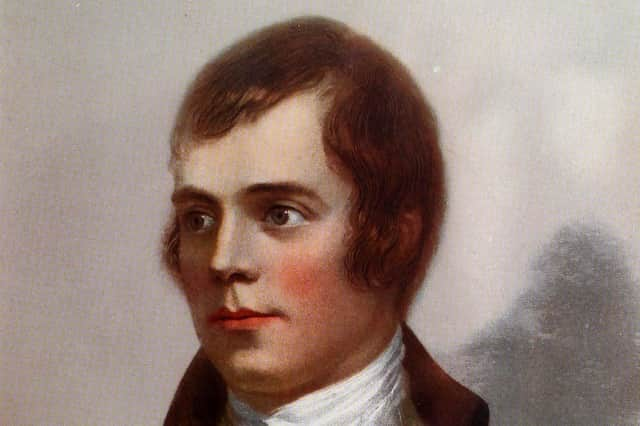New book reveals Burns' passion for music and truth behind hogmanay anthem Auld Lang Syne


But the version of Auld Lang Syne we sing today is thanks to his second song editor, George Thomson, and not to Burns himself, according to experts.
Now the ‘stormy’ relationship between Burns and Thomson has been brought to light in a new book which features letters between the poet and Thomson, revealing what Burns thought of specific songs and tunes – and even tell us how he wrote a song.
Advertisement
Hide AdAdvertisement
Hide AdThe letters explain why Burns’ passion for songs was so important to his artistic work, and why they took up so much of his time, especially when farming at Ellisland and then in Dumfries where he worked for the Excise in the final years of his all-too-short life.
Professor Kirsteen McCue, Professor of Scottish Literature and Song Culture and Co-Director of the Centre for Robert Burns Studies at the University of Glasgow, said: “Burns’ relationship with his second song editor, Thomson, was a stormy one, and Thomson is seen as a ‘bad boy’ in the Burns story.”
“Thomson is accused of changing Burns’ texts and choosing different tunes for Burns’ songs, after the poet’s death in 1796 and of making lots of money from the proceeds, after having failed to pay Burns for all his work. Burns, in fact, often mixed and matched songs and tunes himself and he forcefully refused to accept payment from Thomson. But the battle against Thomson has raged to this day.”
McCue, a talented singer in her own right, states that it was thanks to Thomson’s combining the Auld Lang Syne text with a different tune that we have ended up with the version known around the world today.
In 4th volume of The Oxford Edition of the Works of Robert Burns, due to be published in February, Professor McCue has studied Burns’ songs for George Thomson.
It’s the first time, since their original publications, that the songs Burns produced for Thomson have been presented as they were seen by Thomson’s readership in the 18th century. The new volume also has detailed notes and commentary showing the collaboration in all its detail.
Professor McCue added: “In 1799, just three years after Burns’ death, Thomson combined the text of ‘Auld Lang Syne’ that Burns sent to him with a different tune.
“The one he chose has ended up being the one we all now sing as the global song of parting and which we’ll all be singing across Burns’ birthday again in 2021.”
Advertisement
Hide AdAdvertisement
Hide AdThomson was an Edinburgh civil servant who was to be one of Burns’ major correspondents across the last four years of his life.
He was the editor who married Burns’ lyrics with musical settings by several of the most influential European composers of the day, including Joseph Haydn and Ludwig van Beethoven.
He was also a central figure in the memorialisation of Burns in the early decades of the 19th century – helping in the erection of the Edinburgh Statue, and aiding in the preparation of James Currie’s first major edition of the poet’s life and works, alongside appearing at several important early Burns suppers.